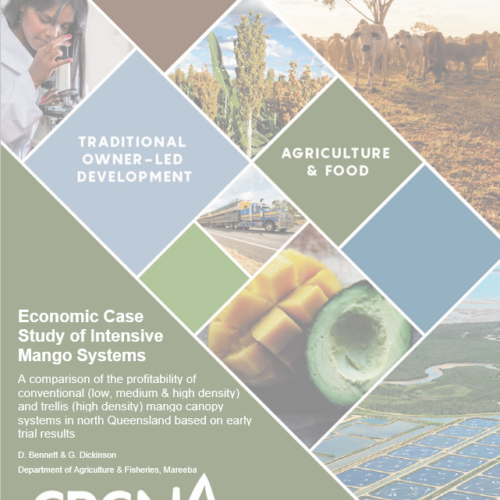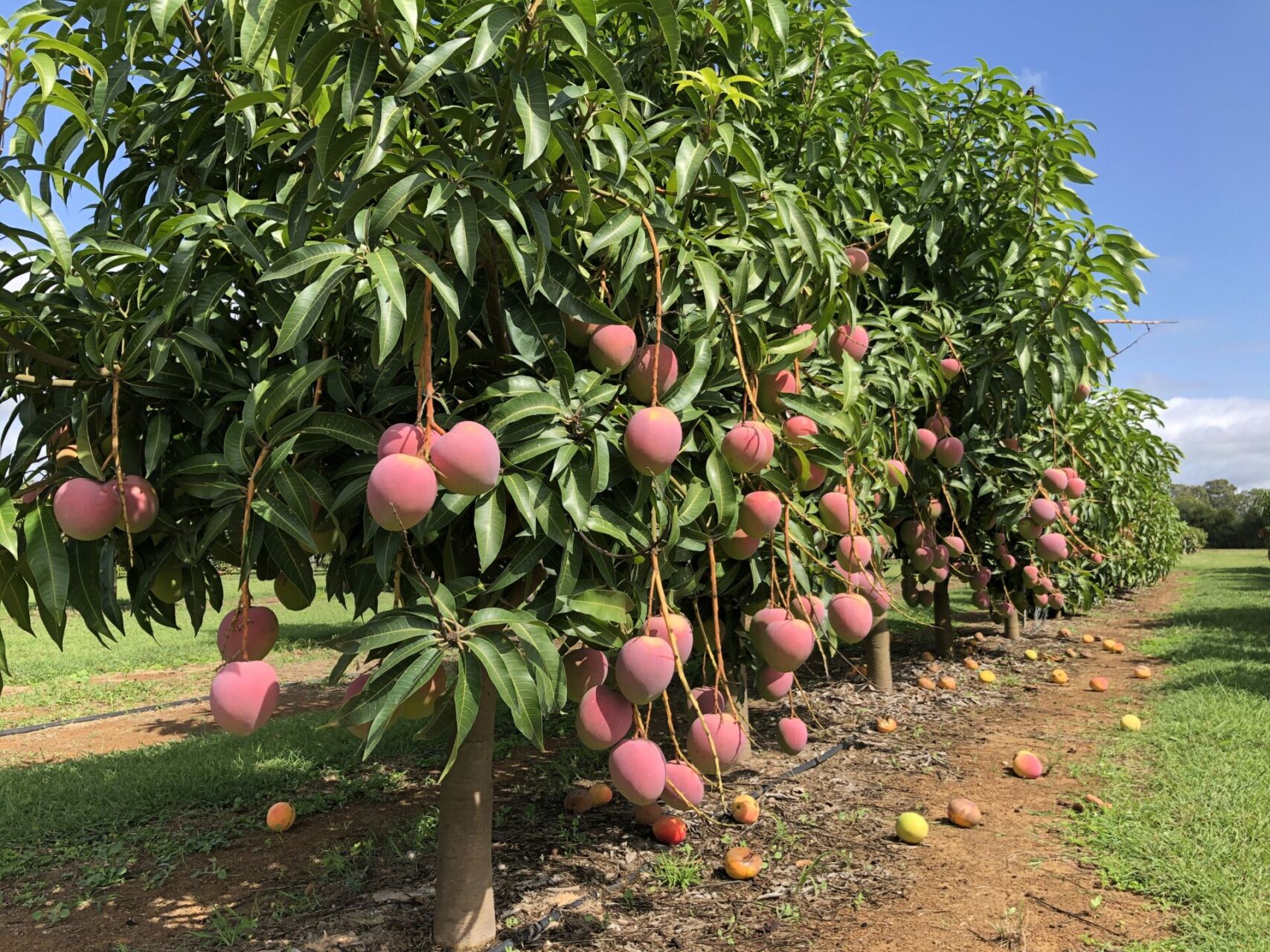
- Author Bennett, D., Dickinson, G., Department of Agriculture and Fisheries Queensland
- Publish date May 16, 2021
- Type Report
- ISBN 978-19-22437-23-5
- Documents
- Horticulture
Summary
A comparison of the profitability of conventional (low, medium & high density) and trellis (high density) mango canopy systems in north Queensland based on early trial results
A key priority for the Australian mango industry is to increase industry productivity through increased yields and reduced input costs. The adoption of high density orchard systems by other tree crops has successfully improved the profitability of these industries and there is potential for these systems to also improve profitability of the mango industry.
This economic case study compares discrete farm level investments in conventional low, medium and high density canopy systems and a trellis high density canopy system for mango production in north Queensland.
The study aims to determine whether the extra investment required to implement medium or high density mango orchards is likely to return a higher gross margin, compared to conventional low density orchards, using the B74 (Calypso®) variety. Data were sourced from the DAF Planting Systems Trial at Walkamin, in far north Queensland.
Three key outcomes were identified:
- the calculation of establishment costs/hectare for the four canopy systems
- that higher density orchards achieve much higher annual gross margins/hectare (difference between annual gross revenue and annual variable costs) than lower density orchards
- that the cumulative nett cash flow/hectare became positive across all four systems at a relatively young age (4 years for conventional high density, 5 years for conventional low and medium density and 6 years for trellis high density), but then rapidly accelerated in the systems with increased planting density and intensification.
Overall, this case study concludes the adoption of higher density planting densities requires a higher level of investment during establishment and the first 10 years – but these costs are rapidly recouped by the higher revenues achieved by increased yield per hectare.
Additional benefits of high density systems also include improved cyclone resilience, spray efficiency and greater application for new technologies such as automation and robotic harvesting.
Projects
Transforming mango futures
Two large mango growers, Manbulloo Ltd and BJM Enterprises, aim to grow their businesses through greater production of high-quality fruit, suitable for domestic and Asian export markets. Recognising the business potential of new intensive management systems developed by Department of Agriculture and Fisheries (DAF) in intensive mango management systems including high-density and trellis designs, adaptation to mechanisation and robotics, greater input efficiency and greater cyclone resilience, they intend to form an industry-led venture with DAF and the Australian Mango Industry Association (AMIA) to commercially trial techniques. A variety of ‘best-bet’, high-density mango orchard technologies will be established as commercial-scale research trials on 3 properties in Queensland and the Northern Territory, using current and new varieties to facilitate the transition to next-generation, high-productivity orchard systems.


